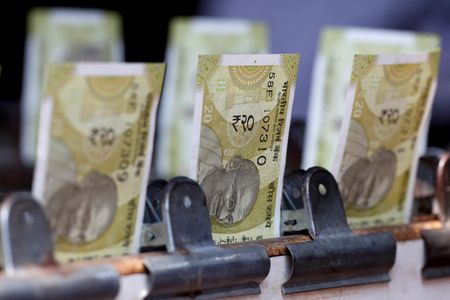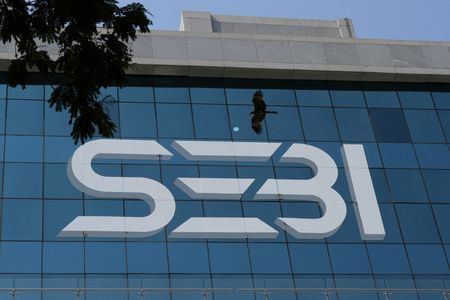By Jaspreet Kalra
MUMBAI (Reuters) – The Indian rupee closed nearly flat on Monday, as the boost from a broadly weaker dollar was blunted by persistent hedging demand from importers and lacklustre foreign portfolio flows.
The rupee closed at 88.21 against the U.S. dollar, marginally stronger from its close at 88.2750 in the previous session.
While the currency rose to an intraday peak of 88.1475, traders pointed out that dollar demand from local importers, including oil companies, shaved its gains later in the session.
Data released on Monday showed that India’s merchandise trade deficit narrowed in August to $26.49 billion, from $27.35 billion in July, as exports slowed after U.S. President Donald Trump hiked import tariffs on Indian goods.
India and the United States are slated to hold trade negotiations on Tuesday in New Delhi, a trade official said on Monday.
India’s benchmark equity indexes, the BSE Sensex and Nifty 50 closed down by about 0.2% each, diverging from a modest uptick in their Asian counterparts, as investors braced for a set of pivotal central bank policy decisions this week.
Key rate decisions in the U.S., Japan, the United Kingdom, Canada, and Norway are due this week, with the Federal Reserve’s decision on Wednesday taking centre stage.
While money markets have fully priced in a 25-basis-point rate cut by the Fed on Wednesday, investors will pay close attention to commentary from Chair Jerome Powell and policymakers’ updated economic and benchmark policy rate projections.
The interest rate-expectations sensitive 2-year U.S. Treasury yield was steady at 3.55%. On the longer end of the curve, the 10-year U.S. Treasury yield was steady at 4.06%.
“Any disappointment in the Fed’s rate cut relative to the pace of cuts already priced, coupled with any renewed concerns about the fiscal situation, for instance, could quickly lead to a reversal higher in long bond yields,” analysts at Standard Chartered said in a note.
Meanwhile, dollar-rupee forward premiums were steady on the day with the 1-year implied yield <INRANPRM1Y=RR> at 2.33%, hovering near its highest level since May.
(Reporting by Jaspreet Kalra; Editing by Eileen Soreng)











